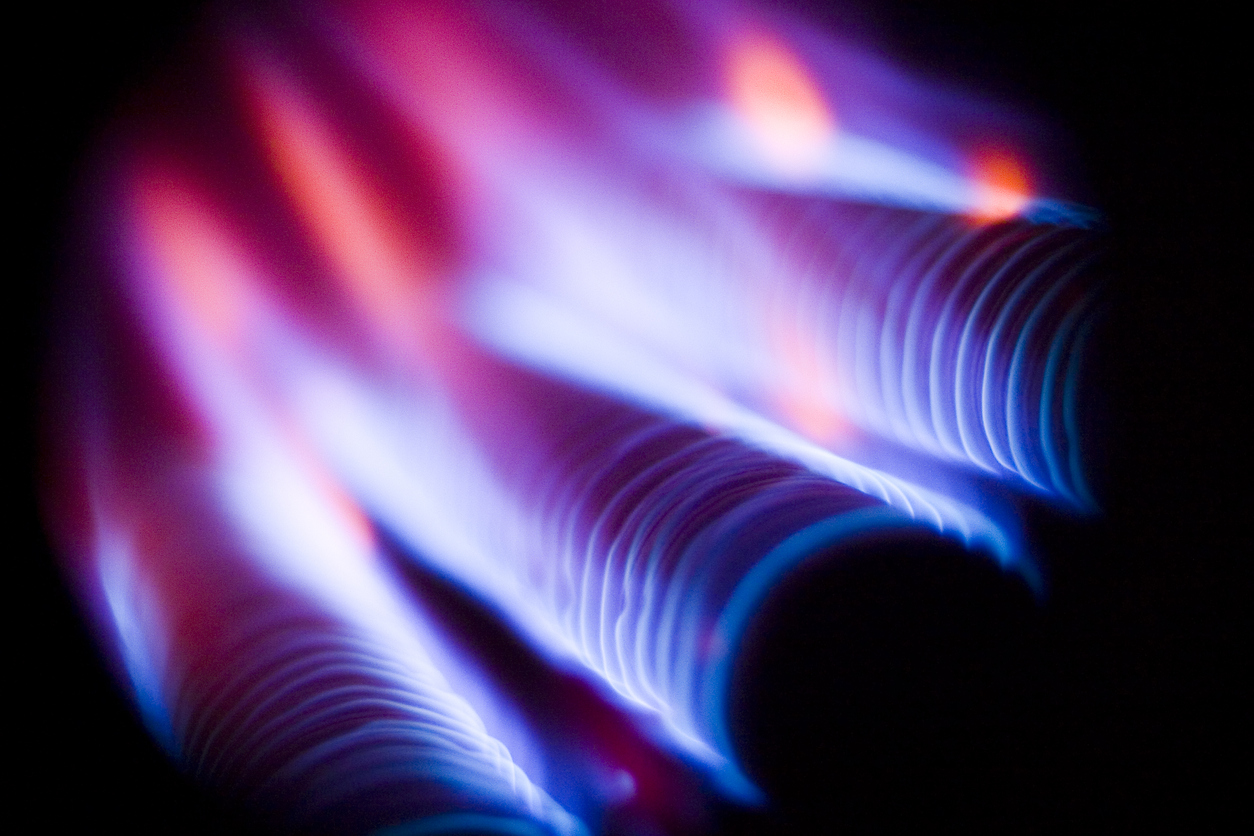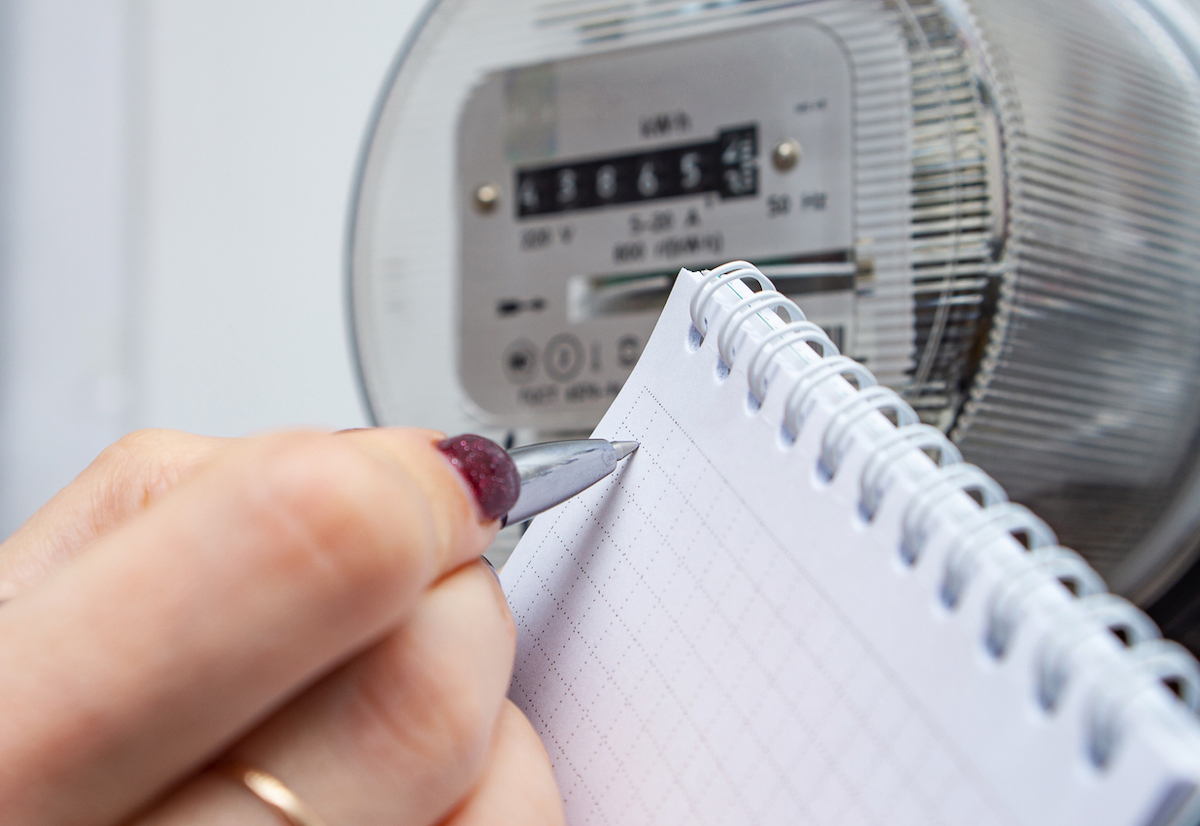We may earn revenue from the products available on this page and participate in affiliate programs. Learn More ›
Chilly months are much more bearable with a functioning, efficient heating system, but there are many options for keeping a house warm. For many homes, this choice comes down to electric furnace vs. gas furnace differences.
A residential furnace is a forced hot air system that distributes heat throughout the house using air ducts and vents. The amount of heat is controlled by a thermostat. With a life expectancy of 15 to 30 years, furnaces can run on natural gas, propane, heating oil, or electricity.
When deciding whether to install an electric furnace or gas furnace, consider the details that follow and be sure to consult with a professional.
A gas furnace uses combustion, a heat exchanger, and a blower to warm a home.
Each type of furnace needs a heating activation method to operate. In a natural gas furnace, heat is produced when the pilot light ignites the burner. The flame warms up a metal heat exchanger, which heats cold air from its intakes. The blower then pushes the warmed air through ducts in the home, raising the indoor temperature. The flame stays lit until the thermostat detects that the air has reached the desired temperature setting, at which point the gas heat will turn off.
A gas furnace will sit idly without producing any heat until the air temperature falls below the thermostat’s heat setting. At this point, the thermostat signals the furnace to fire up its burners and warm up the heat exchanger again.
Gas furnaces require a natural gas line running directly into the home. They also need a flue for the exhaust to exit the home safely.

An electric furnace uses electricity, coils, and a blower to produce heat.
In an electric furnace, an electronic ignition turns on the heating system. The furnace pulls cold air into an exchanger, where it’s heated over electric heating elements called coils. The unit then pushes warm air into the ductwork by use of a blower fan to heat the home. Of course, the thermostat controls whether an electric furnace is on or off throughout the day. All of the heat produced stays in the home since there’s no venting or flue loss through a chimney.
Electric furnaces have many benefits. For homes that aren’t already connected to a gas line, an electric furnace is a good option. Installing a new gas line can be very expensive—upward of $1,000. Electric furnaces also tend to be safer and healthier than gas furnaces because they produce no risk of carbon monoxide poisoning. Finally, electric furnaces are quieter than gas counterparts, which may be a priority for some homeowners.
RELATED: The Best Furnace Brands for Today’s Home
Typically, electric furnaces are less expensive to purchase and install than comparable gas furnaces.
Comparing the cost of home furnaces can be tricky since electric furnaces cost less to buy and install than gas furnaces, while gas furnaces have lower operating costs than electric. Regardless of type, the cost of buying and installing a new furnace can range from hundreds to thousands of dollars, with a national average of $4,453.
According to HomeAdvisor, the average cost of a gas furnace is $2,100 and electric furnace cost is almost $835. However, these prices can go up when choosing high-end brands with more features, like variable speed blowers that help keep temperatures more consistent throughout a home. Installation fees add to the total cost. Installing a gas furnace can cost between $3,800 and $10,000 for the unit and labor. This rate will be higher if a homeowner is converting from electric to gas, since gas furnaces require adding ductwork and a gas line. On the other hand, costs can range between $2,000 and $7,000 to install a new electric furnace.
Furnace installation is very challenging and dangerous as a DIY project. In fact, it is not permitted in some locations without a license. Check with your local government and consult a professional to learn more.

While utility rates vary, gas furnaces are usually less expensive to operate than electric furnaces.
In order to make the best decision possible, it’s helpful to assess gas vs. electric furnace operating costs. Because natural gas is less expensive than electricity, gas furnaces take the prize for being cheaper to run. Based on average U.S. utility rates, it costs about $16 per BTU to run a gas furnace and $41 per BTU for an electric furnace. Therefore, it is 2.5 times more expensive to run an electric furnace than gas, on average. The U.S. Energy Information Administration estimated that electric heating costs for U.S. homeowners would average $1,359 in winter 2022 to 2023, while homes heated by natural gas would cost about $930 over the same time period.
Furnace repair costs are also a consideration to account for. It costs between $50 and $200 to repair an electric furnace, with labor averaging between $100 and $300. Gas furnace repair is more expensive, with costs varying between $300 to $1,200, depending on the type of repair needed.
Geographic location plays a major role in whether an electric or gas furnace is best for a home.
A home’s ZIP code can determine whether an electric or gas furnace is the more favorable option. Climate, energy source availability, and local utility costs affect the price and effectiveness of electric and gas furnaces. For example, gas furnaces are recommended for homes (especially larger ones) in colder climates since they’re less expensive to run than electric furnaces.
However, there has been news of natural gas appliance bans in some places. Several major cities across the country have outlawed new natural gas hookups to reduce carbon emissions, so be sure to check with your local government to see if you are permitted to install a gas line for a new gas furnace.
Gas-heating households in the Northeast and Midwest pay about $1,000 to $1,100 for the season, while those in the West and South will pay only $700 to $800. Of course, if a home is not already supplied with natural gas, installation costs might be so prohibitive that an electric furnace is the better choice by default. In some rural areas, natural gas isn’t even an option, though heating oil or propane might be available. In most cases, the costs of these fuels may be much higher than in suburban and urban areas.
RELATED: How to Fix a Furnace That’s Not Turning On

Experts recommend annual inspections for both furnace types, with emphasis on gas systems.
According to the Department of Energy, annual maintenance by a heating system professional can help extend how long a house furnace lasts, while also saving money and energy. A well-maintained furnace can last up to 20 years.
Routine furnace maintenance involves changing filters regularly since they affect air quality. A clogged furnace filter can restrict airflow, causing the furnace to work less efficiently. Other steps include removing dirt, soot, or corrosion from the system; cleaning the heat exchanger to maintain heating levels; and making sure air ducts and heating pipes are properly sealed.
Poor maintenance can age a furnace prematurely, leading to unwelcome costs and energy usage. For gas furnaces, lack of maintenance can also result in health and safety concerns if a gas leak occurs or carbon monoxide spreads throughout the home. A broken furnace can also spread dust, mold, and other tainted air that can trigger asthma and allergies. To keep the system running efficiently over the years, avoid expensive mistakes like heating an empty house, not changing the air filter, and ignoring leaks and drafts.
Not sure if your furnace needs a repair? Look for red flags like heat loss; water leaks; strong odors like a fuel smell; unusual noises like banging, grinding, or squealing; short cycling; and utility bills that are higher than normal.
RELATED: 10 Home Heating Mistakes That Spike Your Utility Bills


